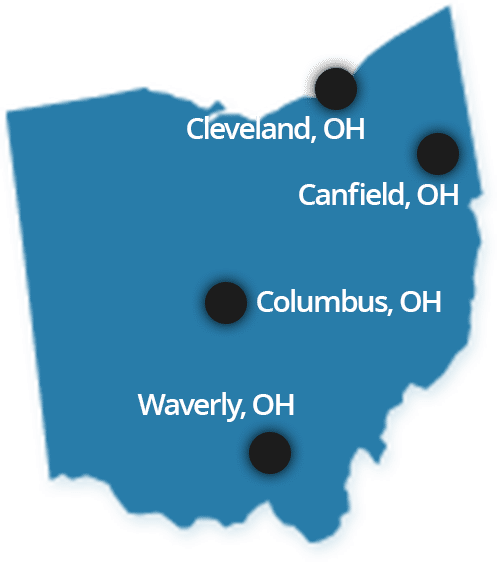The USA Swimming Foundation says Ohio ranked # 4 for kids under the age of 16 drowning in pools and spas in 2019. Each of the top three states–Texas, California, and Florida–is a year-round warm weather state. There were 14 media-reported child drownings in pools and spas across Ohio in 2019. But that’s 6.3% of incidents nationwide, in a state with about 3.5% of the population and a much shorter pool season than many.

Of course, the problem extends far beyond drowning deaths. Nationally, a few hundred kids and young teens die by drowning each year. But thousands of others are treated in hospital emergency departments after nonfatal drowning injuries suffered in pools and spas.
In 2019, there were 6,300 incidents, down from 6,400 the previous year. But 2019 saw an uptick in incidents involving children under the age of five. 98% of those involved pools.
Unsurprisingly, these incidents are most likely to occur in summer, peaking for all age groups in July. While more than half of these kids are treated and released at the emergency room, 29% in 2019 were admitted to hospitals or transferred to other facilities–that’s nearly 2,000 children.
Consequences of Non-Fatal Drowning Incidents
Many who survive such an event recover entirely. But non-fatal drowning incidents can have significant medical consequences, including cognitive impairment and organ damage. And the long-term effects can’t always be accurately predicted. That’s one reason it’s important to speak with a personal injury attorney experienced in handling medically complex cases before entering into any settlement after a non-fatal drowning incident. Insurance companies recognize that there may be long-term impacts you don’t yet know about, and are often motivated to get you to sign away your rights before you understand the full extent of the damage and the potential costs of future medical care.
Why Do Swimming Pool Accidents Happen?
Most swimming pool submersion accidents, including those involving children, are avoidable. Some common reasons these incidents occur include:
- Inadequate supervision of children in the pool or the pool area;
- Inadequate barriers to keep unattended children out of the pool area;
- Poorly marked or unmarked depth zones and sudden drop-offs;
- Slick or poorly maintained surfaces surrounding the pool.
Often, that means someone else’s negligence caused or partially caused the incident.
Non-Drowning Swimming Pool and Spa Injuries
While the numbers are much smaller, each year a handful of children are seriously injured or killed in “entrapment incidents” involving pools and spas. These incidents also occasionally occur in whirlpool bathtubs.
An entrapment incident occurs when a person’s hair, clothing, or body part is caught in a drain, sucked into an open sump or pipe, or otherwise captured in the pool or spa equipment. Sometimes, entrapment is responsible for drowning and non-fatal drowning incidents. This most commonly occurs when the child’s hair is caught in a filter or other part of the mechanism, holding him or her under water.
Back in 2013, Grammy-winning musician Usher nearly lost his five-year-old son when the child was caught in a pool drain underwater. The boy was being supervised by two adults at the time, and they were unable to free him. Fortunately, two additional adults–audio-visual technicians working inside the house–were able to get him loose in time.
But other types of serious injury are possible as well. On rare occasion, children have been disemboweled by suction after sitting on pool filters or skimmer boxes that aren’t properly covered.
When these types of injuries occur, responsibility may lie with the manufacturer of the pool or spa. But these incidents can also be attributable to negligent maintenance, failure to teach children pool safety and properly supervise them, or allowing children who are too young and small to use hot tubs and other spa equipment.
Protecting Against Pool-Related Injuries
Parents can take many steps to reduce the risk of pool-related injury, including:
- Ensure that children have swimming lessons early and understand pool safety;
- Make sure children are properly attended when in and around the pool, whether that means sitting with them or ensuring that they use public or commercial pools staffed by lifeguards;
- Make sure children are familiar with a pool they enter, including where drop-offs are in the water and where drains and other equipment they should avoid are;
- Consider bathing caps or, at a minimum, putting long hair up before the child enters a pool or spa;
- Monitor and maintain any pool or spa under your control;
- Comply with Ohio law and any local law regarding fencing and other security measures for swimming pools on your property.
Unfortunately, even your best efforts can’t entirely eliminate risk. Sometimes equipment is faulty, a lifeguard or another parent is careless, or the area around the pool is too slick. If you or your child has been injured in a pool or spa accident, it’s in your best interest to talk with an experienced Ohio lawyer as soon as possible. Because pool and spa injuries may involve a combination of claims, it is a good idea to consult a law firm that is experienced with general negligence-based claims, premises liability cases, and product liability.
At Plevin & Gallucci, we’ve been fighting for the rights of injured people for decades. We know you need reliable information to make good decisions, so we offer free, no-obligation initial consultations. You can schedule yours right now by calling 855-4PLEVIN or filling out the contact form on this page.

